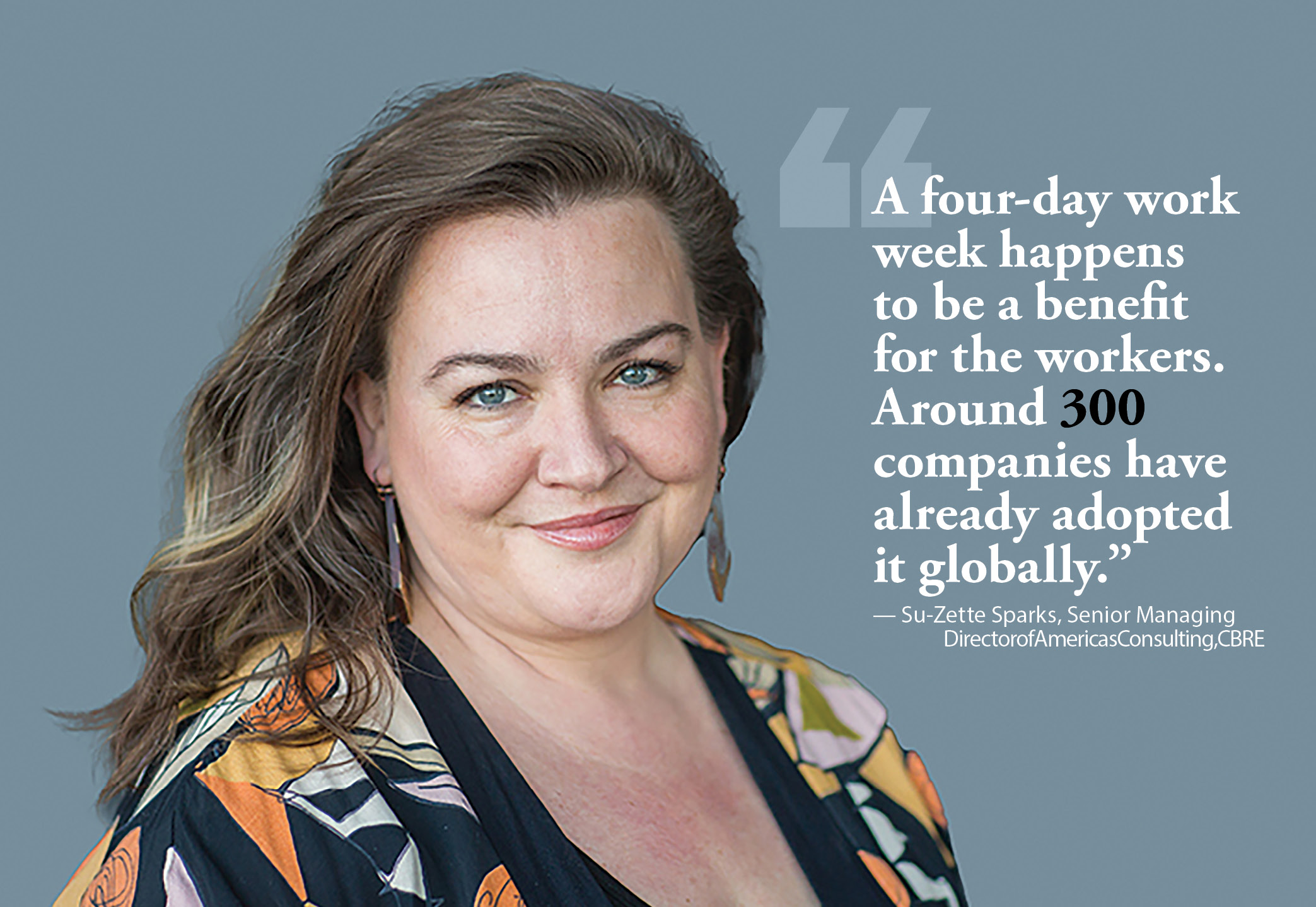Pandemic-era lockdowns put 20 million American workers out of a job. While most of those jobs have since been recovered, what Americans want from work has changed.
According to a recent report titled “Worker Voices: Shifting Perspectives and Expectations on Employment” by the Federal Reserve Bank of St. Louis, the pandemic made American workers re-evaluate their priorities, with the result being that most people now expect work-life balance and more schedule accommodations from employers.
Spending more time at home with their families went from being a government mandate to being a worker expectation. One byproduct of that is the four-day work week.
While the concept itself is not new, the trend of exploring widespread adoption of it in the workplace is. In its Spring 2023 U.S. Occupier Sentiment Survey of 200-plus U.S. companies with offices, CBRE found that 20% of respondents are either exploring a move to a four-day work week or implementing it altogether.

To learn more about this burgeoning trend, we turned to Su-Zette Sparks, senior managing director for Americas consulting at CBRE. Here is our conversation with her on this topic:
Where did the movement to adopt a four-day work week begin?
SPARKS: We have been talking about this since 1930. John Maynard Keynes predicted this would happen. Richard Nixon as vice president in the 1950s picked up on that thread too. It is often attributed to Henry Ford. Right now, it is kind of an old-fashioned notion. Productivity is top of mind for our clients. A four-day work week happens to be a benefit for the workers. Around 300 companies have already adopted it globally. Over 60 companies experimented with this in the UK. Other companies hopped on the bandwagon and over 90 firms participated.
Can you share any examples of large employers in the U.S. who have adopted this shorter work week already, and what their experiences have been?
SPARKS: Biggest adopters have been small and mid-cap firms. Many in tech. They tend to be more experimental. They are taking place at the team level. They are based on the way that people are working today. Smaller mid-cap firms — about 90% of those firms that participated decided to continue, and 18 decided to adopt it permanently. Out of that study, it has to do with morale and fewer absences. The data is so early. It also helps with recruitment. It is a pretty competitive market, so it helps recruitment strategies. It does not suit all industries. Some companies have shift work that is drastically impacted. It affects overtime. It is very different for some industries like healthcare and hospitality. Productivity did go up slightly. Revenue held flat and was up 1% for some companies in the UK. Meetings can be a big time waster. The level of change management that you have to commit to is big. What is the impact on culture? That is a very important driver for some companies.
How would a shift to a four-day work week affect both landlords and tenants in the office sector?
SPARKS: We are so early in the conversation that the data is still being collected. The potential could be in sustainability goals and operating costs. We could collect better data sets. There are a lot of dependencies on both ends. Six states have put forth legislation around a four-day work week. Four more states are entertaining it. It is around incentivizing it or mandating it.
Are there any pitfalls to avoid when contemplating moving to a four-day week?
SPARKS: No. 1 is meetings. Evaluate these and how people spend their time to make sure that a 32-hour work week works. You have to have a plan and get employees involved in this. It is the number one pitfall if you don’t have a plan to address it. What will you take off their plate so they can handle it? I don’t know of anyone who has already adopted this in large-cap. For larger companies, it may be a slower burn.

